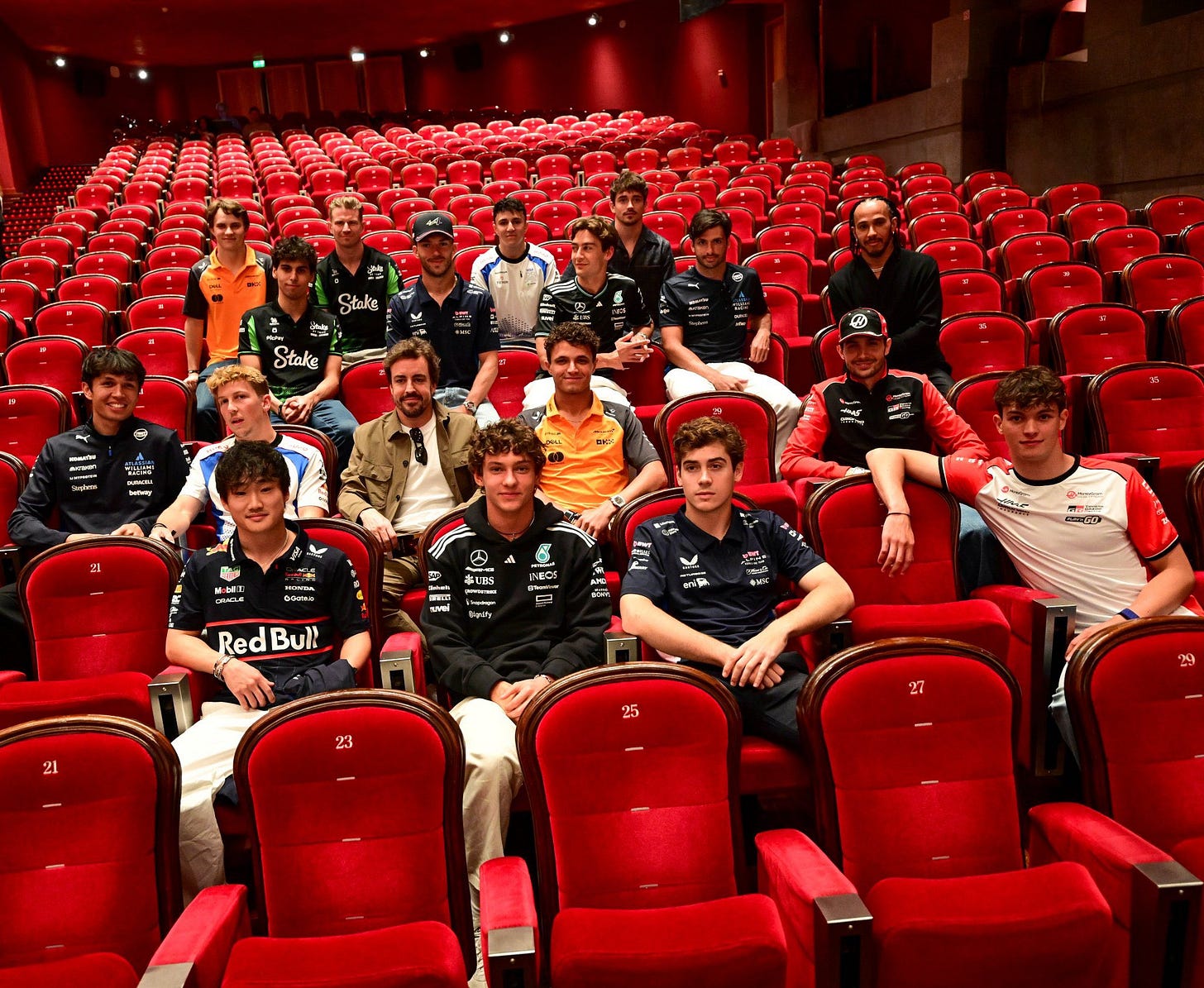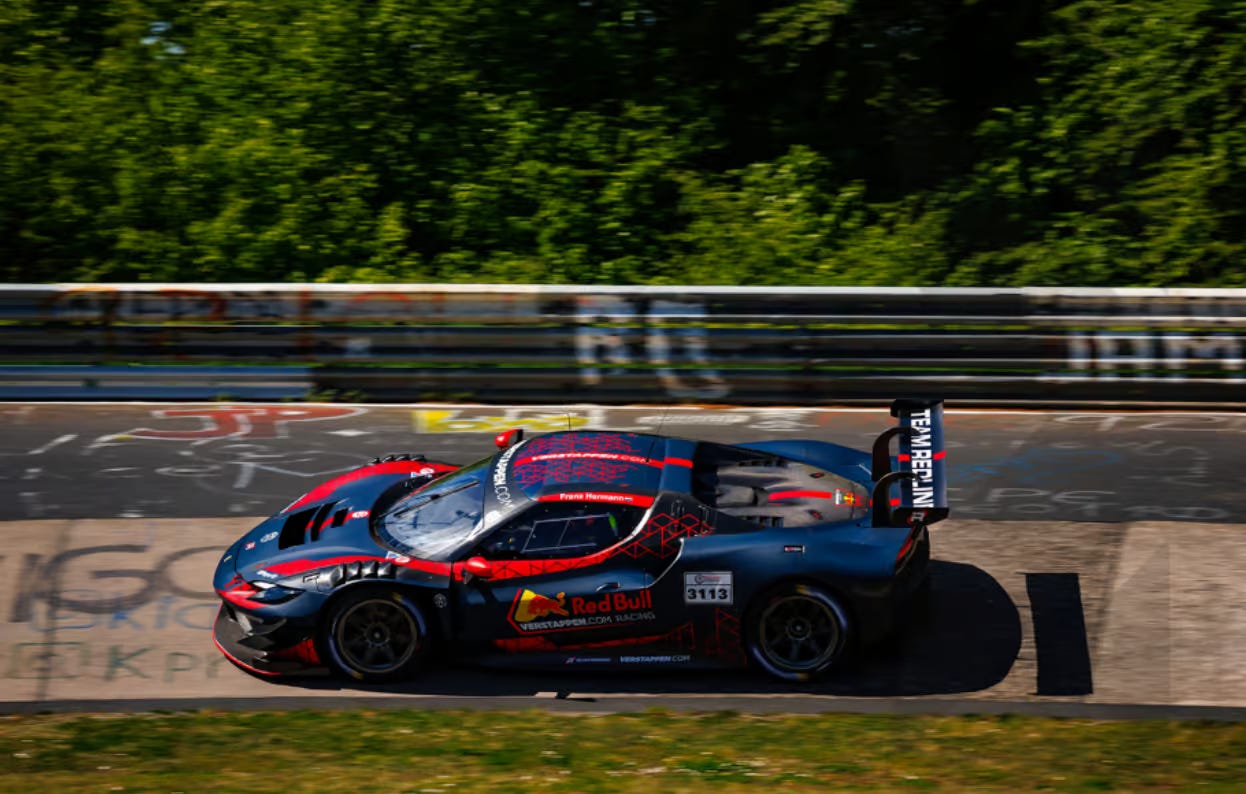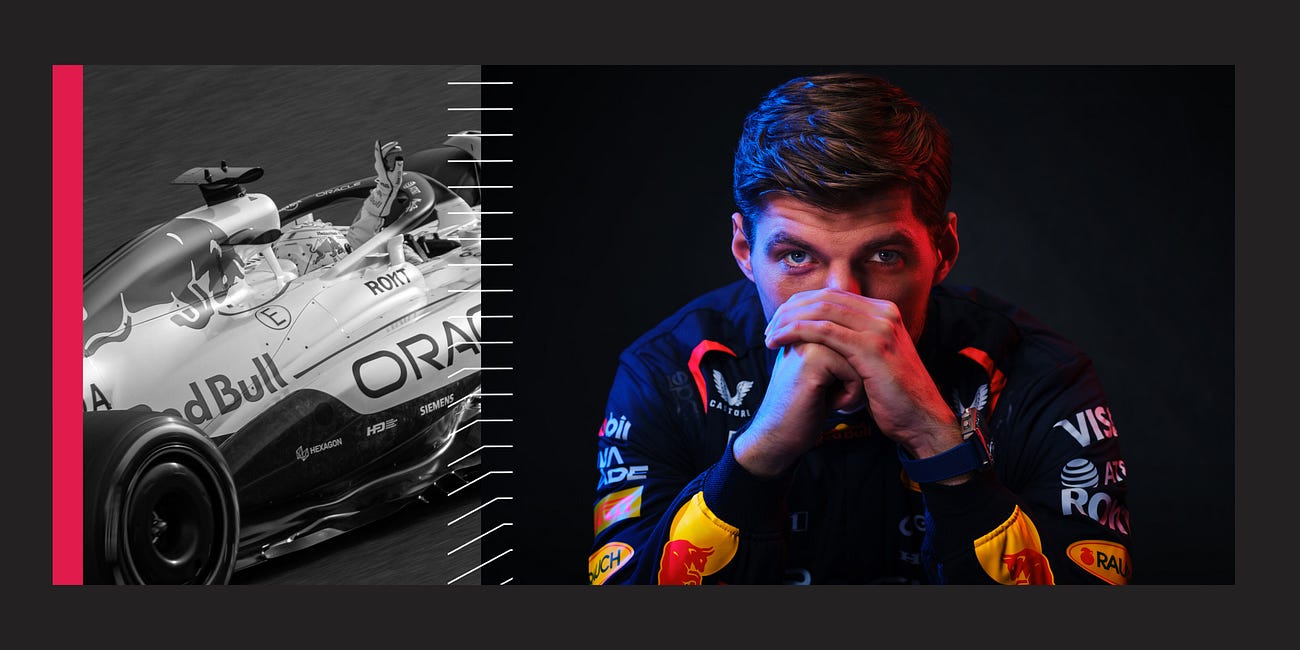Checkered Reputations: Part Three - Without a Verstappen or Hamlin, your sport is broken
Love them or loathe them, the villains and heroes of racing keep the engines, and audiences, running.
Earlier in May, McLaren were predicted to dominate in Miami. The Papayas claimed a strong one-two, finishing over 35 seconds ahead of the next competitor. Yet, it was Red Bull’s Max Verstappen that started the race from the front of the grid. He had defied expectations.
Experts hailed the Dutchman for claiming another surreal pole position, a spot that was earmarked for the McLaren, whose car characteristics favoured the sunshine state of Florida.
Verstappen’s third pole position of the season in an inferior car has slowly turned him into the underdog across most races, streaking The Papayas ordained success with hints of Dutch orange.
Andrea Stella, McLaren’s team principal hit back at this ‘narrative’, stating that Red Bull are very good at ‘creating the narrative to their advantage.’
“They (Red Bull) exploit every possible opportunity to stay in the competition and some of these opportunities sometimes is to create the narrative like: ‘Oh we are making miracles here, the others should win every single practice session and qualifying and race’,” he told the media in Miami.
And as Oscar Piastri claimed his fourth race of the season that day, Verstappen’s little subplot revealed that narrative is just as powerful as performance in modern motorsport.
Verstappen driving a countertrend
Verstappen is one of the most criticised drivers on the grid. A concoction of ruthless race craft, blunt responses, and a tainted 2021 championship has often seen the Red Bull driver attract negative press coverage and jeers from the crowds.
But McLaren’s rise has orchestrated a countertrend for the Dutchman.
The four-time world champion is seen as the biggest threat to McLaren’s strong form. Verstappen’s performances have been cheered at venues where he was once booed - São Paulo (2024), which houses a legion of Lewis Hamilton fans and Imola (2025), that practically worships Ferrari.
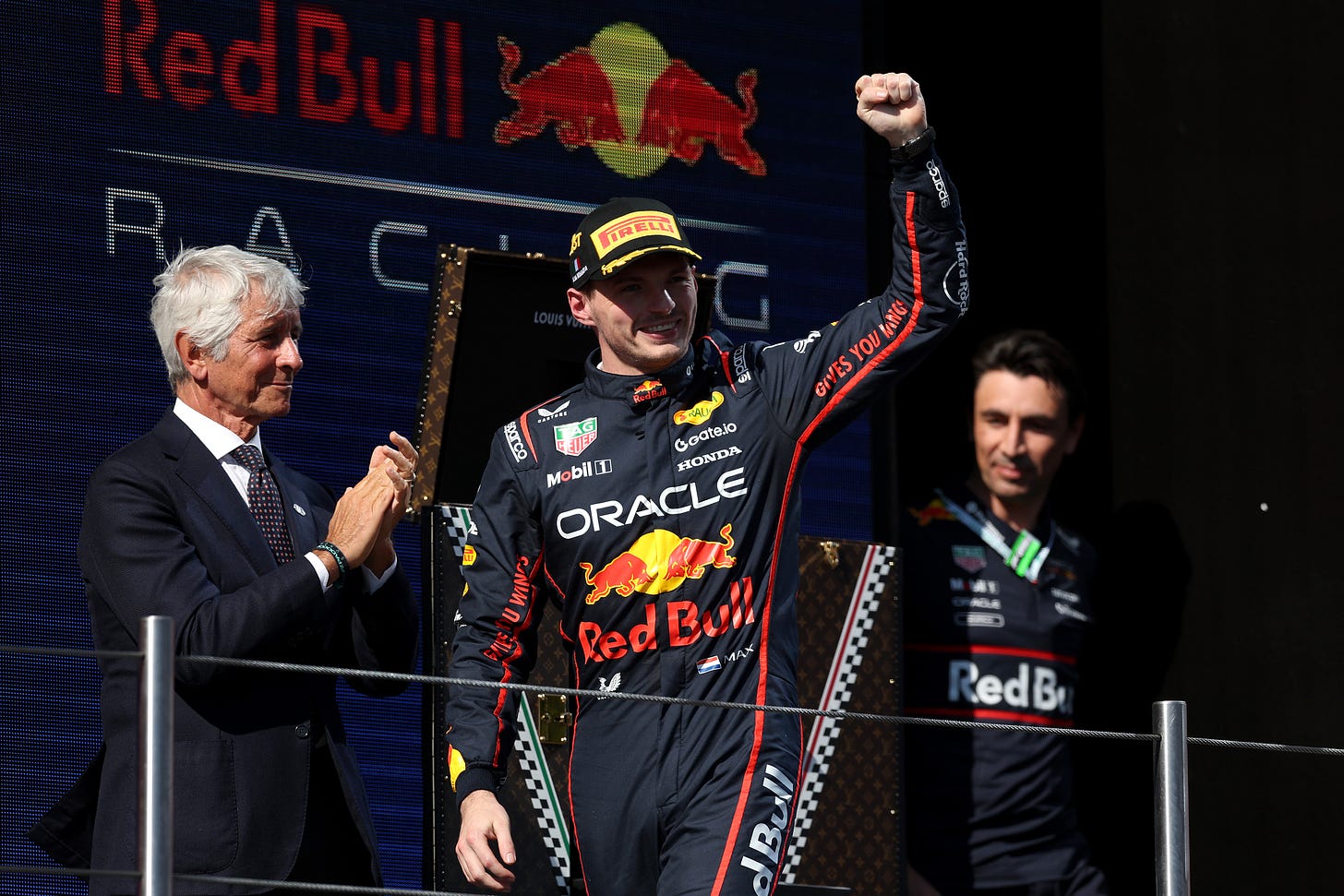
Formula One always had fascinating stories, but today, these narratives are much more accessible. That wasn’t always the case until Netflix popped the hood to a wider audience.
Docu-series like Drive to Survive (DTS) and NASCAR: Fullspeed have added a new dimension to the motorsport experience, a depth so captivating that viewership has reached record numbers and tapped new markets.
The exposure has been great for drivers and teams, even better for investors and sponsors that are either part of or looking to make the most of this dot-com bubble scenario since Colin Chapman slapped Imperial Tobacco’s Gold Leaf branding on his Lotus 49B in 1968.
With Formula One’s growing glamour and the addition of commercially attractive tracks like Las Vegas, sponsors are betting on viewership or the sport’s expanding fanbase.
As Formula One Group’s revenue increased 13.4% to $3.65 billion (£2.7bn), enriching the company’s coffers in the background, online engagement has also increased on the front end.
A cursory glance on social media will reveal a significant number of posts on driver lifestyle and attitudes, a development coinciding with the rise of DTS and the injection of a younger audience. One in three fans started following the sport in the last five years, according to Emily Prazer, Formula One’s Chief Commercial Officer.
At the epicentre of the sport, where racing matters the most, drivers like Max Verstappen (F1) and Denny Hamlin (NASCAR) frequently dominate discourse, either for their controversial actions on track or speech.
In this series, The Asterisk examined the impact of characters like Hamlin and Verstappen. The Asterisk spoke to Dr. Timothy Robeers, an expert in the media framing of motorsport, to understand what makes personas like Verstappen and Hamlin so engaging.
More than a race: The media engine behind the drama
The media plays a critical role in how fans consume sports. It’s not only about broadcasting 90 minutes of two sides trying to find the back of the net or cars going in circles, it’s also about producing and delivering an engaging product.
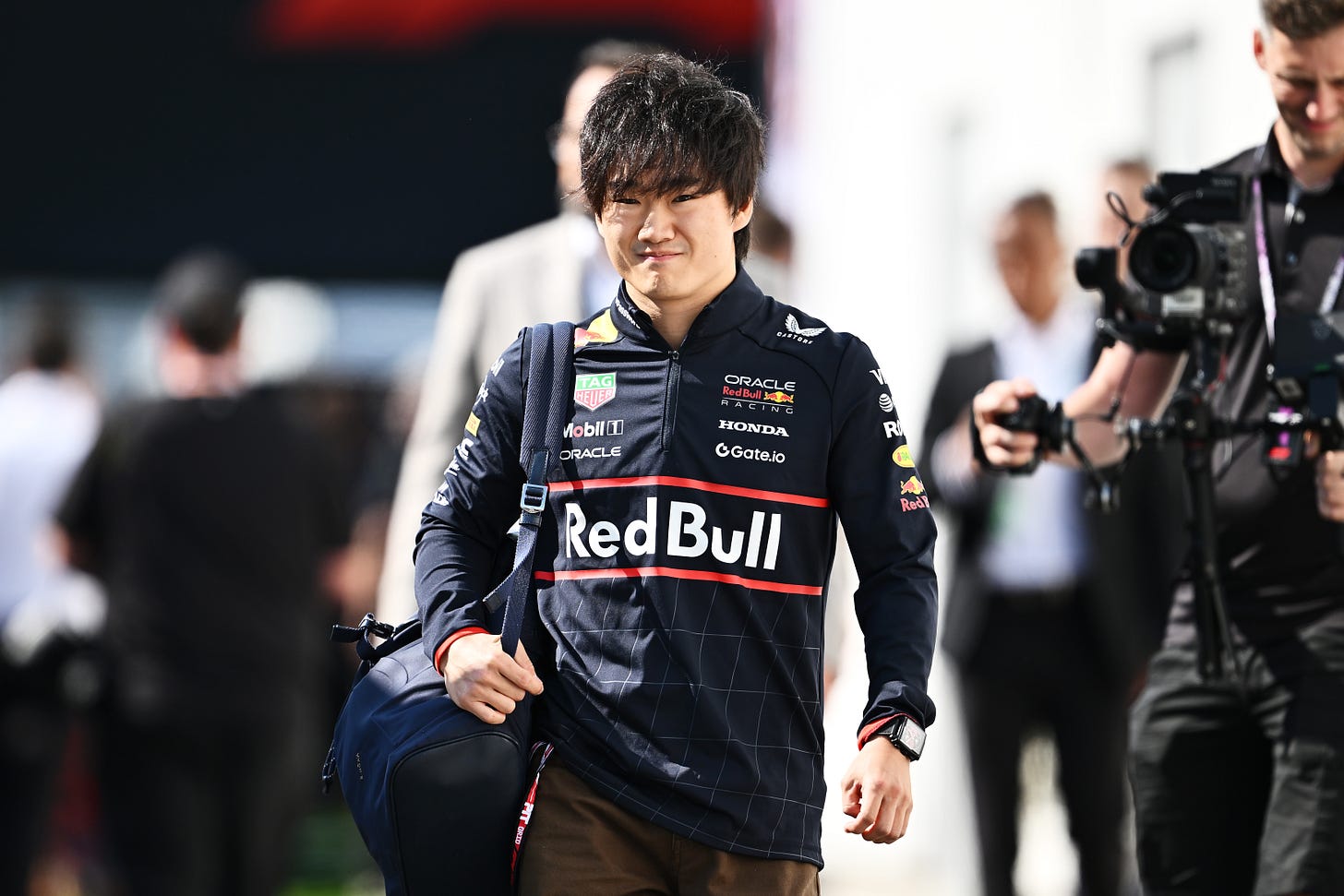
“Sport and media have over the decades become very much intertwined and to the extent now that with motorsport and especially in Formula One (Netflix), it's played even heavily into portraying narratives,” says Dr. Robeers.
In March, Denny Hamlin stirred drama after winning the NASCAR Cup Series in Martinsville. Hamlin waved a flag that read ‘11 against the world’ that riled the crowd, tapping into several ‘underlying components’ that often contribute to what is in effect a mediated spectacle, according to Dr. Robeers.
“In the case of Hamlin, it was the component of being the underdog, him versus the world, coming from a lower position to take the fight to the established ones.”
The underdog element is often the most powerful and inspiring narrative.
“When you look at the narratives that are being portrayed (in sport as a whole), like narratives of heroism, quite often they’re about the underdog,” says the co-founder of the Journal of Motorsport Culture & History. “It's about trial and tribulation, overcoming setbacks, about defeat versus victory, about humiliation and redemption.”
Drivers’ private lives now in the public eye
Hamlin and Verstappen are drivers at the top of their game, who like Michael Schumacher, have risen to fame, another crucial component for viewers.
“It allows them (fans) to escape their daily set of worries and to be able to connect parasocially to someone who they would love to be,” says Dr. Robeers.
The proximity between the drivers and fans has narrowed. Before, fans got a glimpse of driver personalities through team radio broadcasts that revealed lively interactions between the driver and the pitwall. Now, DTS has placed fans in the back seat of the protagonist's lives, a domain once limited to the public eye.
“In the past, interactions between drivers were limited on track and almost nonexistent off it. But with the rise of social media and new technologies, we’re now able to go behind the scenes and see more of their private personas,” says Dr. Robeers.
“When you look at celebrities, they have different personas,” he explains. “They have their private persona, public persona and their political persona, like Sebastian Vettel. His political persona is, doing work for social and ecological sustainability. It's how they intertwine that makes up what people can identify with.”
Of the various personas, the public one is often the most relatable. In the world of sport, national identity plays a major role, and it has been part of Verstappen’s arsenal - the Orange Army.

Verstappen’s rise has been felt and celebrated across the Netherlands. It also coincided with a time when the country’s most popular sport was struggling on the international stage.
“I'm Belgian, so I often go to the Formula One race in Spa,” Dr. Robeers recalls. “You would see the Orange Army come in at a time when the football team was doing quite poorly. So you had a lot of football fans coming in, joining the sport because of that notion of national identity and then relating to the persona that Verstappen is. Many if not most still remain as fans of Verstappen today.”
Verstappen's bruteness and pragmatism are qualities displayed by other Dutch sports personalities, like former Manchester United manager Erik ten Hag and Liverpool centre-back Virgil van Dijk. Their directness in press conferences has often been mistaken for arrogance.
“It's much more now than it ever was,” says Dr. Robeers on the emotions exhibited by sports persons that are filtered or shaped through media.
The new formula: Motorsport’s shift off-track
Formula One has adapted to the times. Under Liberty Media which owns Formula One Group, the top motorsports category has opened up to the masses through digital strategies like Netflix’s Drive to Survive, F1TV, and other exclusive online content. Additionally, it has increased the number of races, promoting closer racing through new regulations, the addition of a sprint format, and the creation of a festival-like atmosphere to improve the race week experience.
The new direction has changed the focus of the consumption of the sport.
While Formula One’s viewership exploded under Liberty Media, its growth has been on a steady upward trajectory. Bernie Ecclestone, who sold Formula One Group to the Americans, played a crucial role in harnessing the power of television. The sport was watched in over 100 countries and recorded 200 million viewers per race, according to the book The Formula: How Rogues, Geniuses, and Speed Freaks Made F1 the World’s Fastest-Growing Sport.
Formula One also witnessed many technological advancements during this time.
“Before there was more emphasis on the mechanical aspect of the sport,” explains Dr. Robeers. In the earlier decades, people were drawn to raw engineering and mechanical ingenuity. That attracted a specific audience. However, the changing demographic has created a different set of expectations.
“It's an adapt or die scenario for Formula 1 and motorsport as a whole ,” he says, stating that other motorsport disciplines are not immune to falling if they do not adapt to meeting fan and stakeholder expectations.
“You have to move with the times on all the different facets and components.”
The cast must keep up
It’s not only the sport that needs to change or adapt in certain ways, Dr. Robeers suggests that its main protagonists also have a key part to play in this shift.
“From a narrative standpoint, drivers need to provide access to their private persona, because that's what fans are coming to expect more and more,” he says of the new and younger audience.
While young drivers like Kimi Antonelli and Isack Hadjar are still learning the intricacies of Formula One, they’re already fluent in a digital landscape that many older drivers aren’t.
“They (young drivers) grew up with social media and are more literate and open to share their private persona,” says Dr. Robeers. “That said, older drivers still remain that grew into racing before the social media era and some struggle or all out refuse to participate.
“You need to be engaging with people. That's the sport changing the expectations, in turn changing the sport along with it.”
Broadcasters have demanded that Premier League clubs permit filming inside the dressing rooms or conduct in-game player interviews. The dressing room, a sacred space for players and the coaching staff could soon be accessible to the world in real time.
The Big Six clubs in the Premier League are reportedly resisting the proposal. In Formula One, Ferrari and Mercedes were once in the same boat during Drive to Survive’s inception. As for drivers, few have the luxury of getting away from public engagements.
Verstappen can afford to switch off
Last month, Formula One drivers watched the screening of the upcoming F1 movie. Two drivers were absent in the group photo that made the rounds on social media - Lance Stroll and Max Verstappen.
When asked why he didn’t attend the screening, Verstappen said, “I just wanted to spend more time at home. It wasn't a mandatory event either, it was just my private time. And I prefer to spend that private time at home, especially because in Formula One you're away from home so much already.”
The Dutchman became a father right before the Miami GP and had skipped press events before the race.
Verstappen also skipped the F1 movie’s world premiere in New York this week.
“I'm going home to my daughter,” Verstappen told reporters. “Whether I will watch that film again at a later time? Maybe yes.”
“I also sincerely hope that it is a good and successful film and that it has a positive effect on Formula 1. You just shouldn't force me to go somewhere, because that's not quite how it should be.”
As the 19 other drivers mingled with Brad Pitt and Hollywood on Monday, Verstappen was spotted at the Spa-Francorchamps circuit for a GT3 test.
Despite the fame that has come from his success, Verstappen does not prefer the cameras or engaging with media outside his assigned duties. However, with Formula One’s growing popularity, and unlike other drivers, Verstappen has the luxury of maintaining his private life.
“He is a very technical and gifted driver who puts in hard work. That’s why he can largely compensate,” explains Dr. Robeers, referencing how Verstappen, for example, opted to skip the F1 movie premiere.
“If you're a back-marker driver or your talents are not good enough, you're not going to suddenly reach the front of the grid, which means that you can try and be a nicer guy off track and do things to draw attention.”
Ultimately, it’s the drivers’ performance on track that matters most, Dr. Robeers counters, without it, they could lose their seat.
“That's the dynamic of motorsport and sport in general because it's related.”
“It's not just enough to be a celebrity.”
Daniel Ricciardo has been one of the most beloved drivers in recent Formula One history. The eight-time Grand Prix winner is also a highly marketable athlete because of his charming personality. However, the Australian could not replicate his Red Bull form and poor performances meant he lost his seats at McLaren and Racing Bulls.

“You need to be performing and those two are always related,” Dr. Robeers says about public engagement. “That’s an important dynamic.
“When we look at Drive to Survive, we see the chaos and the drama and everybody loves it. But it wouldn't be there if it wasn't for the racing.”
Dr. Robeers lauded media companies for identifying this ‘extra potential’ and capitalising on it.
“It's symbiotic,” he says. “Because of that, the popularity of the sports has increased, which means that the success and the revenue in new markets like the American markets have really opened up.”
Why people still matter in motorsport
In an era of endless excitement, drivers like Hamlin and Verstappen are vital in driving motorsports and creating interesting narratives.
The duo were once again in the news for mischief, Hamlin with the mic, and Verstappen with the wheel.
Hamlin hit the crowd with his classic ‘I beat your favourite driver’ amid all the boos after winning the FireKeepers Casino 400 at Michigan International Speedway on 8 June.
Whereas Verstappen made unnecessary contact with Mercedes’ George Russell on lap 64 of the race when he went against team orders and did not let the Brit through in Barcelona.
According to Dr. Robeers, Verstappen and Hamlin often display ‘villainous’ traits that resonate with the sport’s inherently competitive nature, though perceptions vary among fans.
“You have 20 drivers when it comes to Formula One,” he says of the friction that can develop among the drivers. “When you look at World Endurance Racing (WER), it's far more. In Le Mans, you're looking at 65 (drivers). You're always going to have multiple conflicts because they are human drivers.”
The human element will be the differentiating factor when compared to Roborace or automated racing.
“That's what it will lack, at least in the foreseeable future,” adds Dr. Robeers as a former rally raid driver himself. “It will not have that same human element of emotion where the conflict occurs on track and doesn't spill off track.”
“You're always going to have that with people because they're emotional, they're invested, they want to win.
“If you don't have villains or heroes, or a Max Verstappen or a Hamlin, or if you go back in the day, a (James) Hunt or a (Niki) Lauda, (Alain) Prost or a (Ayrton) Senna, if you don't have them, there's something wrong with your sport.
“Your sport is not working because it means that the human conflict is not being generated and that’s inherent to competition because competition at the end is pushing each other to do the best that you can to win.”
Even though Verstappen controversially won the 2021 Drivers Championship, that season will go down as one of the most memorable campaigns. Lewis Hamilton and Verstappen went tooth for tooth in races, making contact several times.
Verstappen remains one of the most famous drivers despite his approach to racing and straightforward responses. He ranks second to Hamilton for most famous contemporary Formula 1 personalities in the UK, according to YouGov.
The Red Bull driver’s popularity is the highest among Millennials, a generation that witnessed drivers like Ayrton Senna, Nelson Piquet and Nigel Mansell who each had a degree of aggressiveness in their driving.
“You want dynamism within each race, between races and between championships,” continues Dr. Robeers. “The more you have that, the more exciting a sport is and all the rest off track adds to that it can feed off the success.”
“But if you don't have that then you've got a structural issue with the sport and that's where Formula One has done a lot of things over the last decade.”
Sports have ‘little mental boxes’ that need to be ticked for people to watch. The expert who has consulted for motorsports businesses and organisations like Formula E, states that it does not matter whether you’re at the event or watch it on TV.
In 2010, former FIFA president Sepp Blatter proposed adding penalties or reintroducing the ‘golden goal’ rule if a game finished goalless at full time. He felt that it would make the World Cup more interesting and prevent teams from playing out boring goalless draws. Like in football, static races are not good for the organisers, especially when they could go on for up to two hours.
“If all the cars would just be careful not to hit each other and just stay in the same position, no, that's not what you want to see… You want to see drama, you want to see people pushing it.”
“Max and Hamlin make the sport more engaging. If you don't have villains or heroes, if you don't have conflict, then your sport is malfunctioning.”
Missed a part? Explore the full Checkered Reputations series here:
Checkered Reputations: Part One - Hamlin stirs NASCAR’s storm with unapologetic flair
“Really?” the commentator watched in disbelief.
Checkered Reputations: Part Two - Verstappen’s ruthless pursuit keeps fans engaged
Anyone but the Dutchman in car number one, that was the sentiment among fans heading into 2024. After all, Max Verstappen had smoked the grid the year before.





